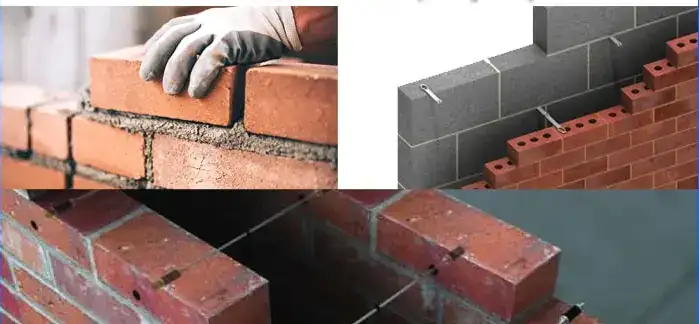The choice between brick and brick veneer is an important decision. Never take it lightly! It is true that both options deliver the aesthetic appeal of brick and differ in complexity. But you must know both of them for every factor. For this reason, we have prepared this guide to compare the features of these construction bricks.
Are you planning to construct a residential, commercial, or industrial project? You will need professional masonry estimating services from a reliable source. The experts provide the best opinions according to your needs and accurate cost estimates. To know about brick and brick Veneer better, let’s discuss the major differences.
Understanding the Major Differences
Solid Brick Construction
Solid brick, also known as solid masonry or double brick, involves creating walls entirely from brick materials that serve as the primary structural support for the building. These walls consist of multiple layers (called wythes) of bricks bonded together with mortar, typically featuring at least two layers where the outer wythe is brick and the inner layer may be concrete or cinder blocks.
Brick Veneer Construction
Brick veneer uses bricks as an exterior decorative material. It is not considered for structural support. That type of stability comes from a backup wall made from concrete, steel, or wood framing.
Installation Processes
Solid Brick Installation
Solid brick construction demands extensive expertise and represents one of the most labor-intensive building methods available. The installation process includes:
Foundation Requirements
- Requires specialized concrete footings costing $15-$55 per linear foot
- Must be installed during initial construction phases as an integral structural element
- The foundation must support the significant weight of multiple brick layers
Construction Process
- Installation of proper drainage systems ($2,000-$5,800 for comprehensive solutions)
- Layer-by-layer brick laying using precise mortaring techniques
- Installation of header bricks (laid sideways) for structural bonding between wythes
- Professional masonry work requires skills and equipment
Professional Requirements
Solid brick construction absolutely requires experienced masons due to:
- Complex structural engineering requirements
- Precise load-bearing calculations
- Specialized mortaring techniques
- Heavy material handling requires proper equipment
Brick Veneer Installation
Brick veneer installation offers significantly more flexibility and reduced complexity:
Pre-Installation Preparation
- Surface must be clean and dry
- Installation of moisture barriers
- Attachment of angle iron along the foundation for the base row support
- Installation of corrugated brick ties every fifth row for wall attachment
Installation Steps
- Layout Planning: Mark horizontal guidelines using story poles to ensure proper spacing
- Apply thin-set mortar using notched trowels
- Press bricks firmly to maintain spacing for mortar joints
- Pattern Creation: Follow running bond patterns, staggering bricks appropriately
- Cutting: Use wet saws with masonry blades for precise brick cutting
- Grouting: Fill joints with Type N mortar after a 24-48 hour setting period
- Finishing: Tool joints with concave joiners for a professional appearance
Installation Timing
Unlike solid brick, veneer can be installed at any point after building construction, providing flexibility for renovations and retrofits.
Cost Analysis
Now, let’s discuss the Difference Between Brick and Brick veneer in terms of cost:
Solid Brick Construction Costs
Material Costs
- $350-$900 per 1,000 bricks for standard bricks
- Cement bricks: $450-$800 per 1,000 bricks
- Total material costs: $9-$20 per square foot
Labor Costs
- Professional rates: $70-$110 per hour
- Labor for Installation: $7-$17 per square foot
- Total installed cost: $25-$45 per square foot
Additional Expenses
- Foundation/footings: $15-$55 per linear foot
- Permits: $85-$485
- Structural engineering: $550 average
- $2,000-$5,800 for drainage
Total Project Cost Evaluation for a 2,000 square foot home is between $50,000-$90,000!
Brick Veneer Installation Costs
Material Costs
- Thin brick veneer: $4-$13 per square foot
- $6-$15 per square foot for standard
- $0.50 per square foot for supplies
Labor Costs
- $2-$8 per square foot for labor installation
- Professional installation is between $8-$18 per square foot
However, the total project cost of a 2,000 square foot home is between $16,000-$36,000.
While working with brick projects, building owners also require investment in concrete. So, get experienced concrete estimation to avoid surprises during the construction process!
Professional Installation Considerations
Solid Brick
Always requires professional masonry contractors due to:
- Structural engineering requirements
- Complex load calculations
- Specialized equipment needs
- Building code compliance
Brick Veneer
Professional installation recommended for:
- Exterior applications requiring waterproofing
- Multi-story installations
- Complex architectural features
- Warranty protection
Regional Cost Variations
Costs vary significantly by location due to:
- Local labor rates (higher in major metropolitan areas)
- Material transportation costs
- Building code requirements
- Climate considerations affecting installation methods
- Permit and inspection fees
Conclusion
In short, through our guide on solid brick vs brick veneer, you can choose between them without the fear of making the wrong decision. For new construction on a budget, brick veneer represents an excellent compromise between appearance and cost. Whereas, people who want maximum longevity, a solid brick is recommended. The best way is to consult a reliable source for acquiring desired outcomes.

